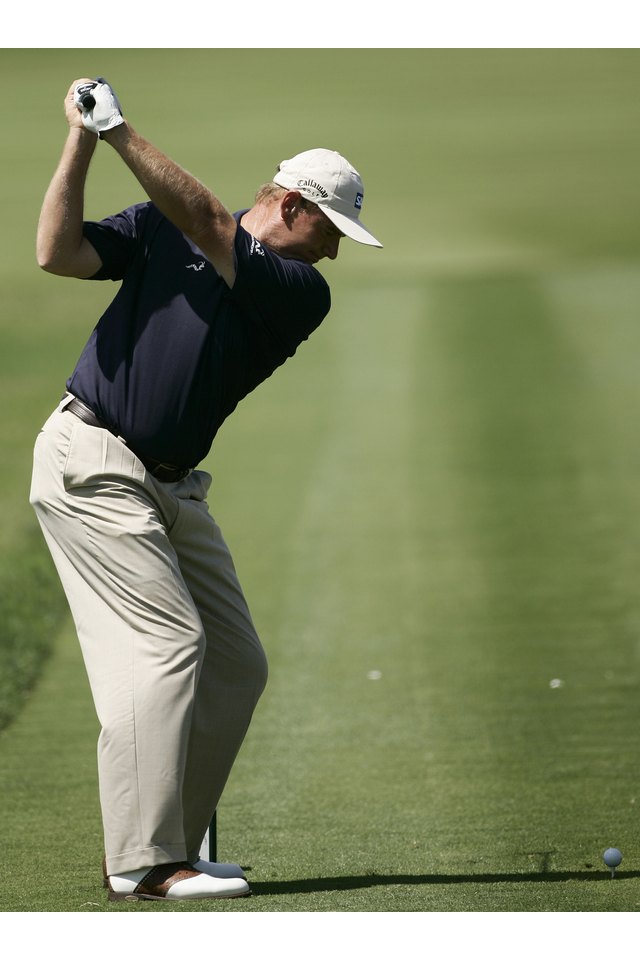How to Maintain the Triangle on the Backswing in Golf

The principle of the “triangle” in golf’s backswing refers to the relationship of your arms -- or parts of your arms, depending on your viewpoint -- as they take the club back and up. Maintaining the triangle helps keep all the moving pieces in your backswing working together to set up an effective downswing.
The Triangle -- Hands and Elbows
Under one theory, the golf swing’s triangle is formed at address with your hand at one point and your elbows at the other two. An imaginary line drawn from your hands to your right elbow, then to your left elbow, then back to your hands, forms the triangle. The angles formed within your imaginary triangle should remain about the same from the address position to the top of your backswing.
The Triangle -- Hands and Shoulders
Some golf instructors consider the player’s arms as the two long sides of the triangle, from the hands all the way to the shoulders. According to these teachers, players should maintain the long triangle at least until the club reaches waist level on the takeaway -- or even a bit beyond that point -- without any major flexing of the wrists or elbows. Eventually, the player’s wrists must cock and the back elbow bends as the club approaches the top of the backswing.
Maintaining the Triangle
Under either theory, golfers should focus on moving their arms in sync and maintaining the triangle until the appropriate point. There are also various drills to help teach players to maintain the arm-to-arm relationship. For example, you can take a short iron and choke up on the club so the grip end is close to your navel. Make sure the grip remains pointed at your navel as you take the club back, until the clubhead points just to the right of your right foot, for a right-handed player. Alternatively, hold a basketball, or a similar-sized object, between your elbows as you assume the address position. Swing the club back until it’s parallel with the ground. You’ll have to keep your arms moving in sync to prevent the ball from dropping.
Benefits
Moving your arms together helps you develop a swing with a wide arc that extends away from your body. The movement also makes it easier to turn your arms and body together, keeping your moving parts working harmoniously. If you employ the hands-and-elbows method, you’ll also avoid the flying elbow mistake, in which your back elbow drifts too high at the top of the backswing, throwing your arms out of sync with your body. You’ll also prevent your back elbow from straying too close to your side during the backswing, which would force you into an awkward downswing.
References
- How I Play Golf; Tiger Woods and the Editors of Golf Digest
- Departures: The Ballad of Jimmy Ballard
- World Golf: Get to Know Your Swing Plane
- The Complete Golf Manual; Steve Newell
Writer Bio
M.L. Rose has worked as a print and online journalist for more than 20 years. He has contributed to a variety of national and local publications, specializing in sports writing. Rose holds a B.A. in communications.
